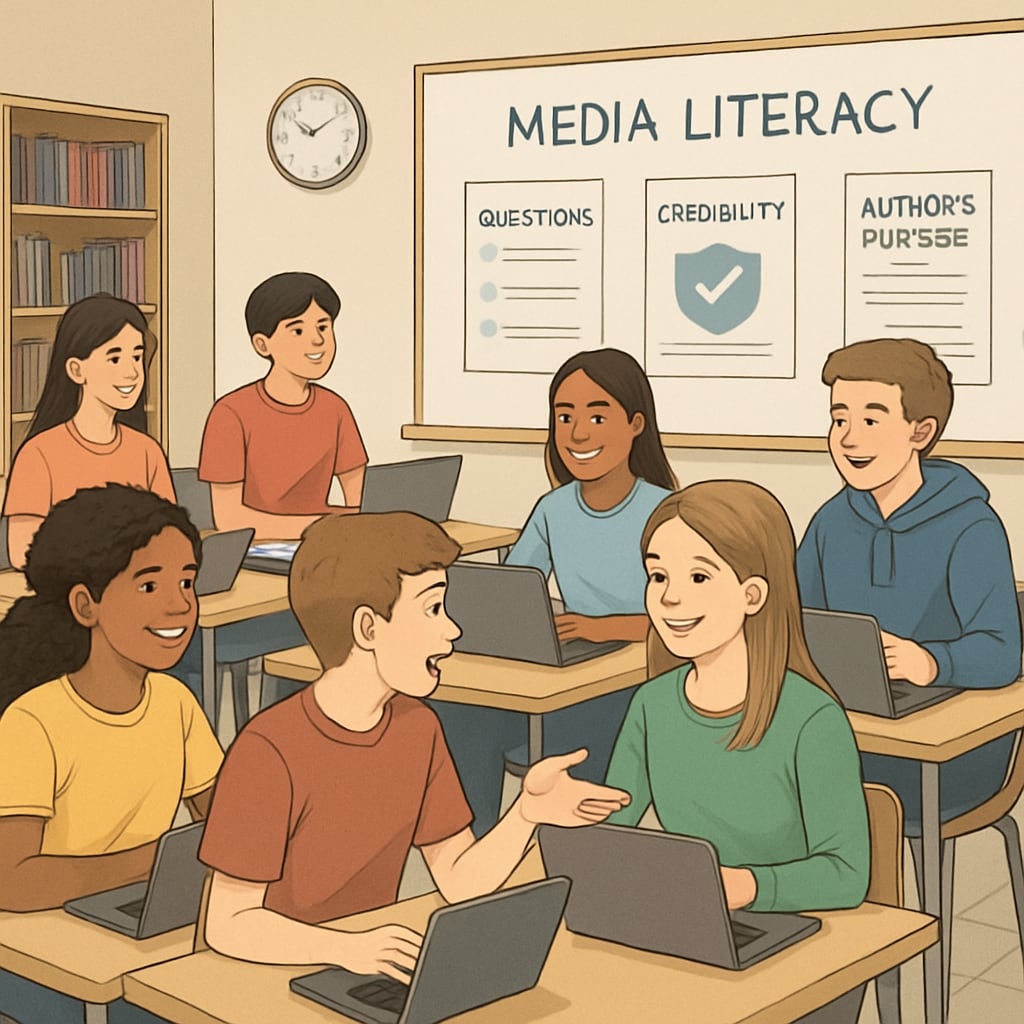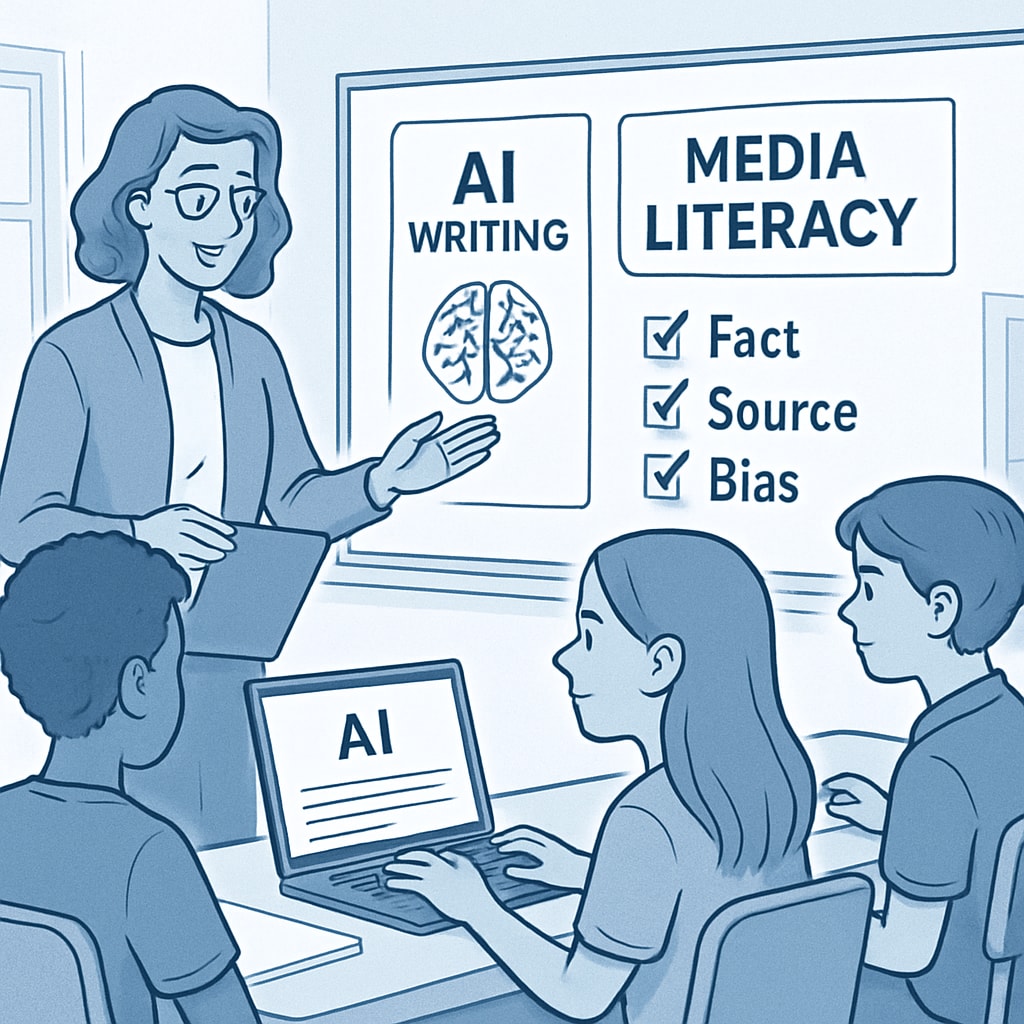In today’s fast-paced digital landscape, understanding and interpreting media has become a core skill for students. Integrating AI tools into classrooms can bridge the gap between traditional education and modern technology. This article introduces AI writing prompts tailored for high school students to enhance media literacy. These free resources are designed for grades 9-12, offering hands-on teaching strategies to improve critical thinking, media analysis, and creative storytelling.
Whether you’re teaching English, media studies, or creative writing, these AI-driven prompts can transform how students engage with media. Let’s explore five structured activities that will empower students to navigate and critique media in the digital age.
Why Use AI Writing Prompts for Media Literacy?
Media literacy is more than just consuming content; it involves analyzing, evaluating, and creating media responsibly. AI offers a dynamic way to support these goals by providing tailored writing prompts that encourage exploration and critical thinking. For educators, AI tools can simplify lesson planning while offering diverse perspectives for students to consider.
For example, AI can help students:
- Deconstruct film narratives and examine visual storytelling techniques.
- Analyze the impact of social media algorithms on public opinion.
- Create ethical and compelling digital content.
By incorporating AI into media literacy lessons, educators can bridge technology with traditional education, creating an engaging learning environment.

5 Free AI Writing Prompts to Boost Media Literacy
Below are five AI-powered writing prompts designed to cultivate media literacy skills in high school students. These activities are adaptable for various subjects, including English, media studies, and creative writing courses.
- Analyzing Film Narratives: Ask students to describe the storytelling techniques in their favorite movie. Use an AI writing tool to suggest narrative structures, such as the hero’s journey or three-act structure. Students can then compare how different films use similar or contrasting methods to engage audiences.
- Decoding Advertisements: Provide students with a digital advertisement and prompt them to analyze its persuasive techniques. AI can generate questions such as “What emotions does the ad evoke?” or “How does the ad use visuals to influence its audience?”
- Exploring Social Media Bias: Ask students to write about how social media algorithms shape the information they see. AI tools can assist in identifying potential biases and suggesting ways to verify the credibility of online sources.
- Creative Storytelling: Encourage students to create a short story set in a futuristic world dominated by media technology. AI can help them brainstorm plot ideas, develop characters, and refine dialogue.
- Evaluating News Sources: Assign students to evaluate the credibility of different news articles on the same topic. AI tools can guide them in assessing the tone, language, and evidence used in each piece.
Each of these activities fosters critical thinking, creativity, and analytical skills, helping students become informed media consumers and creators.

Integrating AI into the Classroom
To effectively integrate AI writing prompts into your lessons, consider the following tips:
- Set Clear Objectives: Define what you want students to achieve, whether it’s analyzing media messages or creating original content.
- Provide Context: Before using AI tools, introduce students to the basics of media literacy, including key terms and concepts.
- Encourage Group Work: Pair students for collaborative analysis and brainstorming sessions, fostering peer learning.
- Facilitate Discussions: Use AI-generated prompts as a starting point for class debates or reflective essays.
In addition, ensure that students understand the ethical considerations of using AI, such as the importance of avoiding plagiarism and verifying AI-generated content.
Conclusion: Empowering Students Through AI
Incorporating AI tools into media literacy lessons provides a unique opportunity to engage high school students in meaningful ways. The five writing prompts outlined above offer educators practical and creative ways to foster critical thinking and digital literacy. As a result, students will be better equipped to navigate the complexities of today’s media landscape.
By embracing AI, teachers can not only enhance their curriculum but also prepare students for the challenges of the digital age. Try these prompts in your classroom today to see the transformative impact of AI on education.
Learn more about media literacy on Wikipedia or explore Britannica’s guide to media literacy.
Readability guidance: Use short paragraphs and structured lists to improve engagement. Ensure that discussions on AI tools remain accessible and relevant to high school educators and students.


